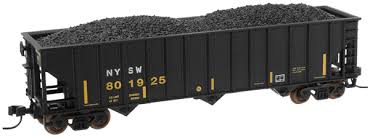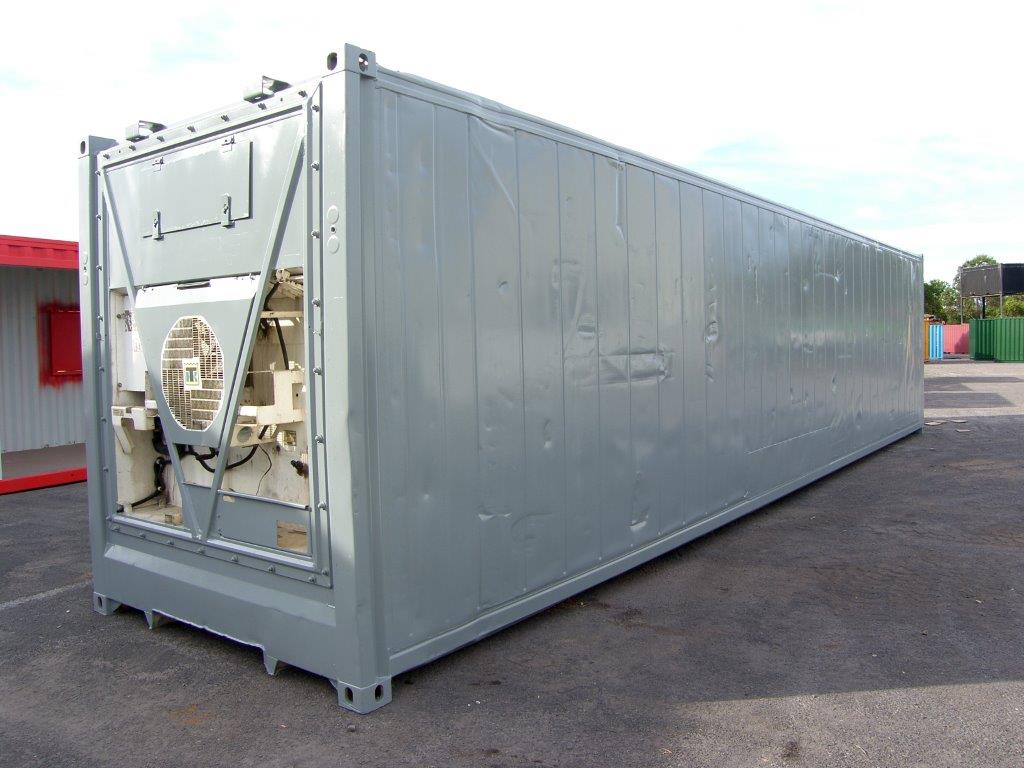Specific Item Information: CSAV Set #1 CRLU 7253254, CRLU 7253275, CRLU 7253296
Model Information: Since the 1970s most international freight has been shipped by standardized 20- and 40-foot containers. Some of this huge flow of cargo between countries needs to be refrigerated for the transit. The second most common type of ISO* container in use is the refrigerated container. Today's refrigerated container design uses high tech composite (plastics and metals) construction and a "picture frame" type refrigeration unit. Atlas' model represents a standard 40-foot high-cube refrigerated container (ISO Type Code 45R1) found in many shipping and leasing fleets.
Features: Prototypically accurate Daikin reefers 40-foot High-Cube Refrigerated Container Composite materials sandwich-sides design Detailed picture window refrigeration unit with separate parts ISO Type 45R1 Five hinge / four bar doors with OUT style handles
Features: Prototypically accurate Daikin reefers 40-foot High-Cube Refrigerated Container Composite materials sandwich-sides design Detailed picture window refrigeration unit with separate parts ISO Type 45R1 Five hinge / four bar doors with OUT style handles
Prototype History: The 40 foot container is the king of the container business. It is the most common standard container size used for international and domestic shipping. Most intermodal operations that handle overseas shipping are optimized for this container size. These containers are typically reinforced for loading, unloading and transportation by ship.
Refrigerated containers are meant for transportation of perishable goods and contain built-in refrigeration units.
Refrigerated containers are meant for transportation of perishable goods and contain built-in refrigeration units.
Road Name History: Compañía Sud Americana de Vapores S.A. (CSAV) was founded in Chile on October, 9th 1872 from the merger of two Chilean maritime companies: Compañía Nacional de Vapores (1864) and Compañía Chilena de Vapores (1870). Currently, CSAV is the oldest shipping line in Latin America and one of Chile’s first five publicly traded companies still in existence.
Throughout the years, the company has relied on the technology of the time – sails, steam and coal and bunker – to operate general cargo and passenger vessels, bulk and car carriers and reefer and containerships. Wars, economic recessions and a highly competitive industry have tested the professional capacity and commitment of its employees and directives.
Today, the company remains active in the containership industry through its interest in the German company Hapag-Lloyd AG.
Throughout the years, the company has relied on the technology of the time – sails, steam and coal and bunker – to operate general cargo and passenger vessels, bulk and car carriers and reefer and containerships. Wars, economic recessions and a highly competitive industry have tested the professional capacity and commitment of its employees and directives.
Today, the company remains active in the containership industry through its interest in the German company Hapag-Lloyd AG.
Brand/Importer Information: In 1924 Stephan Schaffan, Sr. founded the Atlas Tool Company in Newark, New Jersey. In 1933 his son, Stephan Schaffan, Jr., came to work for his father at the age of sixteen. Steve Jr. built model airplanes as a hobby and frequented a local hobby shop. Being an enterprising young man, he would often ask the owner if there was anything he could do to earn some extra spending money. Tired of listening to his requests, the hobby-store owner threw some model railroad track parts his way and said, "Here, see if you can improve on this".
In those days, railroad modelers had to assemble and build everything from scratch. Steve Jr. created a "switch kit" which sold so well, that the entire family worked on them in the basement at night, while doing business as usual in the machine shop during the day.
Subsequently, Steve Jr. engineered the stapling of rail to fiber track, along with inventing the first practical rail joiner and pre-assembled turnouts and flexible track. All of these products, and more, helped to popularize model railroading and assisted in the creation of a mass-market hobby. The budding entrepreneur quickly outgrew the limitations of a basement and small garage operation. Realizing they could actually make a living selling track and related products, Steve and his father had the first factory built in Hillside, New Jersey at 413 Florence Avenue in 1947. On September 30, 1949, the Atlas Tool Company was officially incorporated as a New Jersey company.
In 1985, Steve was honored posthumously for his inventions by the Model Railroad Industry Association and was inducted into the Model Railroad Industry Hall of Fame in Baltimore, Maryland. In addition, Steve was nominated and entered into the National Model Railroad Association Pioneers of Model Railroading in 1995.
In the early 1990s, the Atlas Tool Company changed its name to Atlas Model Railroad Company, Inc.
In those days, railroad modelers had to assemble and build everything from scratch. Steve Jr. created a "switch kit" which sold so well, that the entire family worked on them in the basement at night, while doing business as usual in the machine shop during the day.
Subsequently, Steve Jr. engineered the stapling of rail to fiber track, along with inventing the first practical rail joiner and pre-assembled turnouts and flexible track. All of these products, and more, helped to popularize model railroading and assisted in the creation of a mass-market hobby. The budding entrepreneur quickly outgrew the limitations of a basement and small garage operation. Realizing they could actually make a living selling track and related products, Steve and his father had the first factory built in Hillside, New Jersey at 413 Florence Avenue in 1947. On September 30, 1949, the Atlas Tool Company was officially incorporated as a New Jersey company.
In 1985, Steve was honored posthumously for his inventions by the Model Railroad Industry Association and was inducted into the Model Railroad Industry Hall of Fame in Baltimore, Maryland. In addition, Steve was nominated and entered into the National Model Railroad Association Pioneers of Model Railroading in 1995.
In the early 1990s, the Atlas Tool Company changed its name to Atlas Model Railroad Company, Inc.
Item created by: CNW400 on 2021-05-14 09:29:53. Last edited by CNW400 on 2021-05-14 09:47:47
If you see errors or missing data in this entry, please feel free to log in and edit it. Anyone with a Gmail account can log in instantly.
If you see errors or missing data in this entry, please feel free to log in and edit it. Anyone with a Gmail account can log in instantly.











